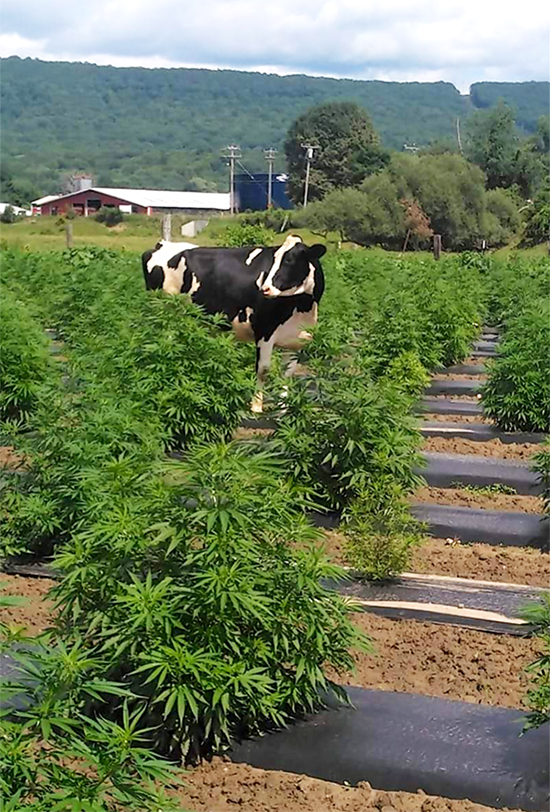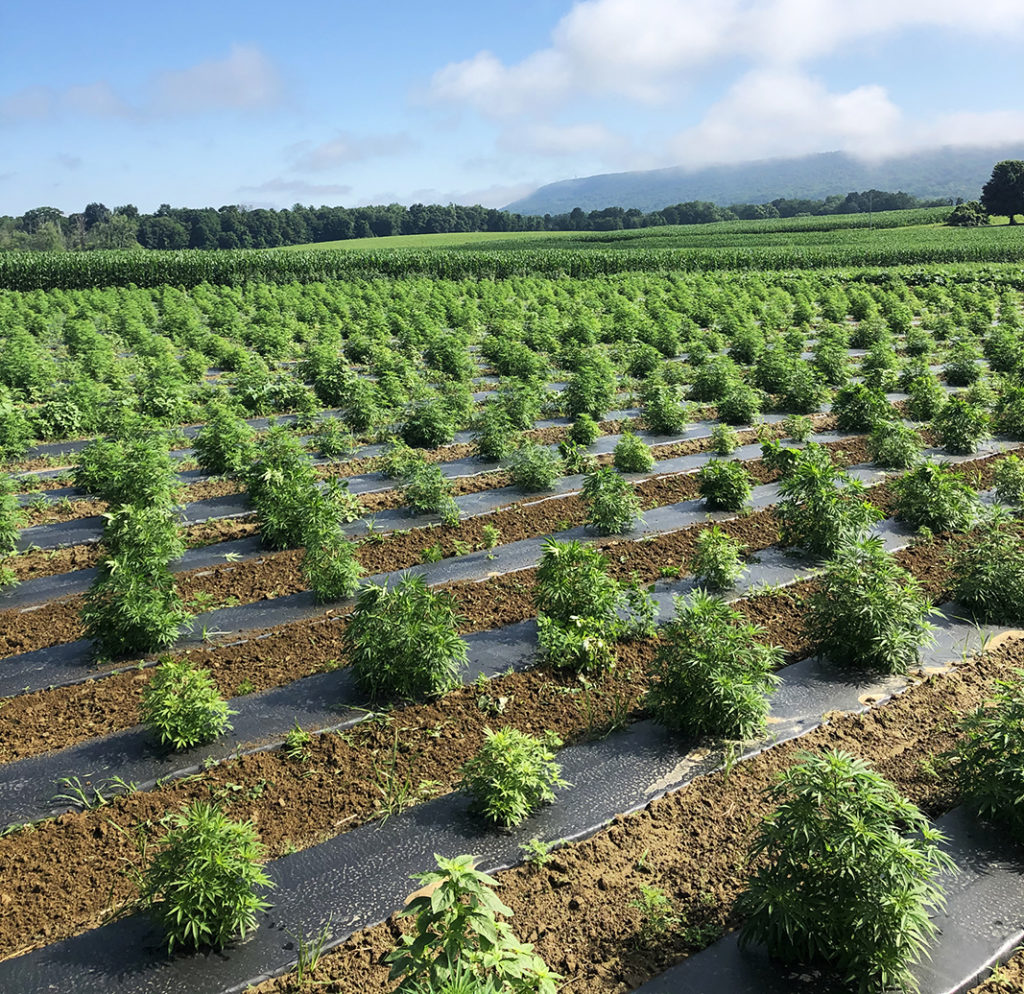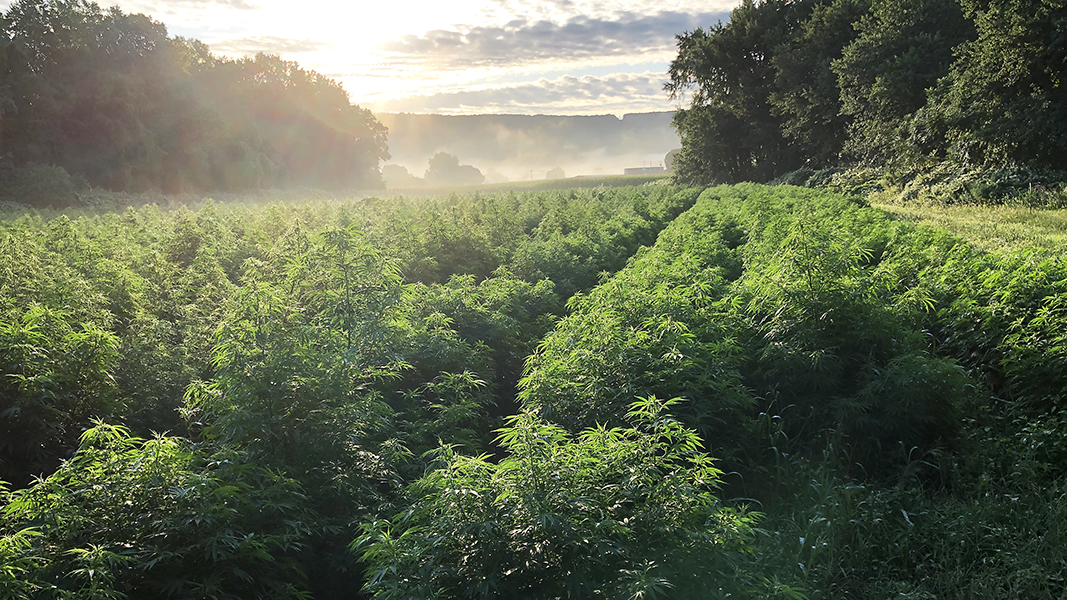Nora Goldstein
Bar-Way Farm, Inc. in Deerfield, Massachusetts is a multigenerational dairy farm founded in 1919 and operated by Steven Melnik and his son, Peter. The farm encompasses 600 acres of cropland. More than 250 cows are milked each day. In 2016, Vanguard Renewables installed a CH Four Biogas 660,000-gallon capacity anaerobic digester to codigest 9,125 tons of manure and 36,500 tons of food waste annually. Vanguard Renewables delivers the food waste as a slurry, which is blended with manure and loaded into the digester. Bar-Way Farm receives a lease payment, along with low-cost energy and free heat and hot water captured from the CHP engine.

Bar-Way Farm utilizes digestate to fertilize the hemp crop it grows for Heritage Hemp CBD. Photos courtesy of Peter Melnik.
About 8 million to 10 million gallons/year of digestate are produced. Separated digested solids are used as bedding for the cows. Bar-Way Farm crops about 700 acres, and also rotates digestate applications with other area farmers. “We are trying to get close to having 1,000 acres available to spread the nutrients on,” explains Peter Melnik. “Depending on the field history and the nutrient load, digestate is applied at about 10,000 to 20,000 gallons/acre. Bar-Way Farm grows corn and hay for our dairy cows, and some butternut squash. And now we grow hemp.”
Segue To Hemp Production
The Pioneer Valley — the Massachusetts portion of the Connecticut River Valley where Bar-Way Farm is located — has some of the most fertile soil in the U.S., and, adds Melnik, a “really nice microclimate for growing all kinds of crops.” John Hanselman, CEO of Vanguard Renewables, notes that the Pioneer Valley was famous for growing shade tobacco that was used for Cuban cigars. “To this day, when you look at fancy Cuban cigars, they are wrapped in Pioneer Valley tobacco leaves,” says Hanselman. “This same soil and microclimate has attracted the CBD industry because it is a very good location to grow hemp.”

Hemp seeds are started in the greenhouse in mid-April and transplanted to the fields in the beginning of June.
Cannabidiol, or CBD, is an active ingredient in cannabis derived from the hemp plant. Heritage Hemp CBD (Heritage CBD) is located in Northampton, Massachusetts and partners with local family farms in New England to grow its hemp, which was legalized in the state in 2016, with permits being issued to grow hemp starting in 2018. The company provides farmers with its own proprietary hemp seeds that are certified by the Massachusetts Department of Agriculture. It refines and extracts the hemp to create the Heritage CBD that contains less than the 0.3% THC regulatory limit.
In 2019, Heritage CBD contracted with 10 different farms in the Pioneer Valley, including Bar-Way Farm, to each grow 10 acres of hemp. “We actually grew 14 acres, which were fertilized with digestate,” says Melnik. “Other farmers fertilized with chicken manure or cow manure. The bud yields on our plants were close to 35% higher than the other growers, the bud size was good, and the overall health of the plants was excellent. The results blew Heritage CBD away. This year, they contracted with us to grow 44 acres, and again, we had tremendous yields. We went into it in 2019 not knowing a lot about hemp. Our strategy was, if we can grow 35,000 plants of corn on an acre and get 30 to 35 tons of corn silage/acre, than we should be able to grow 1,500 hemp plants using our typical fertilizer program, which is two applications of digestate along with proper lime and pH balancing. That’s all we did and it worked!”
Heritage CBD was not familiar with use of digestate for fertilizer. The Melnik’s typical practice with all of its crops is to apply digestate in the fall and again in the spring (via surface injection). The hemp seeds are started in the greenhouse in mid-April, and transplanted on the first of June to the fields. The crop is harvested in late September. “Truly, we use the same principle we were taught by the generation before us: if we take care of the soil we will grow good, healthy crops that make good healthy feed for our cows who make good healthy milk,” notes Melnik. “It is the same principle with the hemp.”
Crop value is “significantly higher than corn for sure,” he adds. “Anaerobically digesting a mix of dairy manure and food waste produces a nice fertilizer with more available nitrogen. It definitely is a cost-savings for our agricultural operations, and we definitely have a lot of it!”












